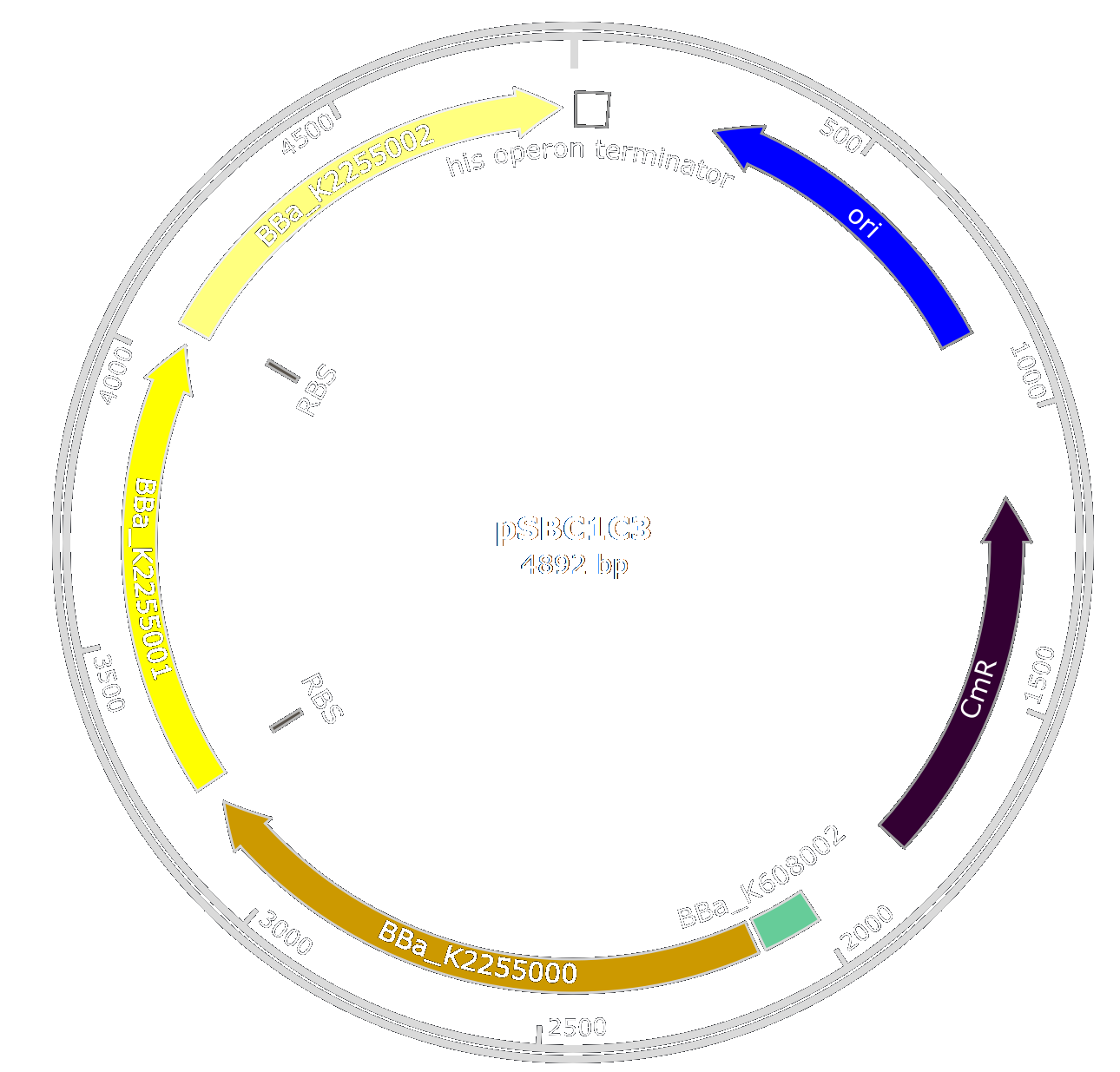Quorum sensing
Contents
Quorum sensing is a mechanism that allows bacteria to coordinate the regulation of their genes according to the density of the bacterial population[1]. It allows bacteria to adopt collective patterns of gene regulation to have, at a population level, an advantageous phenotype. Quorum sensing allows Xylella fastidiosa to produce a biofilm, a sticky extracellular matrix composed of DNA, proteins and polysaccharides, which is one of the key problem in the plant disease because it blocks xylem vessels<ref=Ionescu>Ionescu, M. et al. Promiscuous Diffusible Signal Factor Production and Responsiveness of the Xylella fastidiosa Rpf System. mBio 7, e01054–16 (2016).</ref>.
In order to produce this biofilm, to communicate and coordinate the gene expression of the whole colony, X. fastidiosa mainly uses Diffusible Signal Factor (DSF) which are fatty acids with an insaturation in 2cis position<ref=Ionescu>Ionescu, M. et al. Promiscuous Diffusible Signal Factor Production and Responsiveness of the Xylella fastidiosa Rpf System. mBio 7, e01054–16 (2016).</ref>. The same route of communication also regulates virulence. In addition to quorum sensing, bacteria can also use a similar mechanism called quorum quenching to blur the quorum sensing of other bacterial populations and outcompete them. Therefore, to stop X. fastidiosa to form the biofilm that causes the death of plants we choose to quench it quorum sensing activity.
Pseudomonas aeruginosa under stress produces a specific fatty acid named 2-cis-decenoic acid, that has the ability to stop the biofilm production of many organisms[2]. Thus, we thought about using this specific DSF to stop X. fastidiosa.
Design
As we wanted to limit the number of GMOs in our product we wanted to produce the 2-cis-decenoic acid in E. coli and an efficient purification system. We choose to not use P. aeruginosa because of it pathogeneicity.
Several enzymes are necessary for the production of 2-cis-decenenoic acid by Pseudomonas aeruginosa, not every of them is present in E. coli. Thus, to produce the fatty acid, we design the three enzymes lacking in E. coli for the production of 2-cis-decenenoic and we optimized their sequences for a production in this bacteria. Therefore we design : [http://parts.igem.org/Part:BBa_K2255000 BBa_K2255000], [http://parts.igem.org/Part:BBa_K2255001 BBa_K2255001] and [http://parts.igem.org/Part:BBa_K2255002 BBa_K2255002]
As we wanted to optimize the production we design these parts to form a operon when assembled. Thus, [http://parts.igem.org/Part:BBa_K2255001 BBa_K2255001] and [http://parts.igem.org/Part:BBa_K2255002 BBa_K2255002] has a Ribosome Binding Site (RBS) integrated in the biobrick.
Finally, to produce these enzymes in huge amounts, we decided to add a strong and constitutive promoter in E.coli ([http://parts.igem.org/Part:BBa_K608002 BBa_K608002]).
References
- ↑ Rutherford, S. T. & Bassler, B. L. Bacterial Quorum Sensing: Its Role in Virulence and Possibilities for Its Control. Cold Spring Harb Perspect Med 2, a012427 (2012).
- ↑ Amari, D. T., Marques, C. N. H. & Davies, D. G. The Putative Enoyl-Coenzyme A Hydratase DspI Is Required for Production of the Pseudomonas aeruginosa Biofilm Dispersion Autoinducer cis-2-Decenoic Acid. J. Bacteriol. 195, 4600–4610 (2013).



